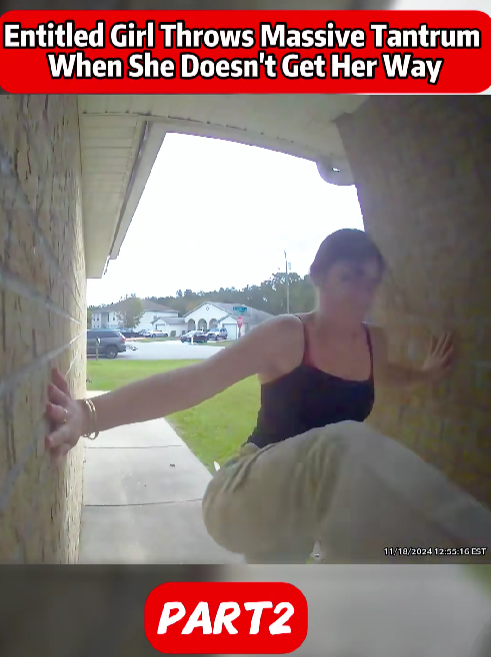What began as a lighthearted Halloween prank has spiraled into a multimillion-dollar legal battle. A homeowner’s motion-activated Halloween decoration reportedly frightened a visiting couple so badly that it caused serious health complications—leading to a staggering $3 million lawsuit. The bizarre case has left the internet divided between laughter, disbelief, and concern over how far holiday pranks should go.
According to reports, the incident occurred when the couple visited a house decorated for Halloween. Doorbell footage shows them stepping up to a porch filled with pumpkins, candy, and a life-sized scarecrow propped near the door. The woman can be heard laughing nervously and saying, “It’s fake,” seconds before the scarecrow suddenly lunges forward—revealed to be a real person in disguise. The fright was so intense that the woman reportedly screamed, stumbled backward, and suffered an injury, while her partner claimed to experience chest pains due to the shock.
Emergency services were later called, and both individuals were treated at a nearby hospital. What might have been dismissed as a harmless scare quickly turned serious when doctors confirmed that one of the victims had a preexisting heart condition aggravated by the shock. Soon after, the couple filed a lawsuit against the homeowner, claiming emotional distress, negligence, and reckless endangerment.
Legal experts are calling the case one of the most unusual examples of holiday liability in recent years. While the homeowner insists it was meant as harmless fun, attorneys for the couple argue that intentional scare tactics cross a line when they endanger lives. “You can celebrate Halloween, but you can’t put people in genuine fear for their safety,” said one legal analyst.
The story has exploded on social media, with commenters split between sympathy and satire. Some users say the lawsuit is excessive, pointing out that Halloween is traditionally about scares and surprises. “If you can’t handle a fake scarecrow, maybe stay home on Halloween night,” one comment read. Others, however, defended the couple, arguing that people’s medical conditions and personal limits aren’t always visible—and that pranks can have unintended consequences.
This incident also raises broader questions about how far is too far when it comes to realism in holiday decor. In recent years, Halloween displays have become increasingly elaborate, with motion sensors, sound effects, and animatronics designed to deliver maximum shock value. But as this lawsuit demonstrates, there’s a thin line between fun fright and dangerous fear.
As the legal proceedings continue, the homeowner faces not just financial risk but also the weight of public scrutiny. Whether the court rules in favor of the couple or the decorator, one thing is certain: the case will likely influence how far Halloween enthusiasts go in the future. What was once just a seasonal prank may now serve as a cautionary tale about the real-life consequences of giving others a fright.











Leave a Reply